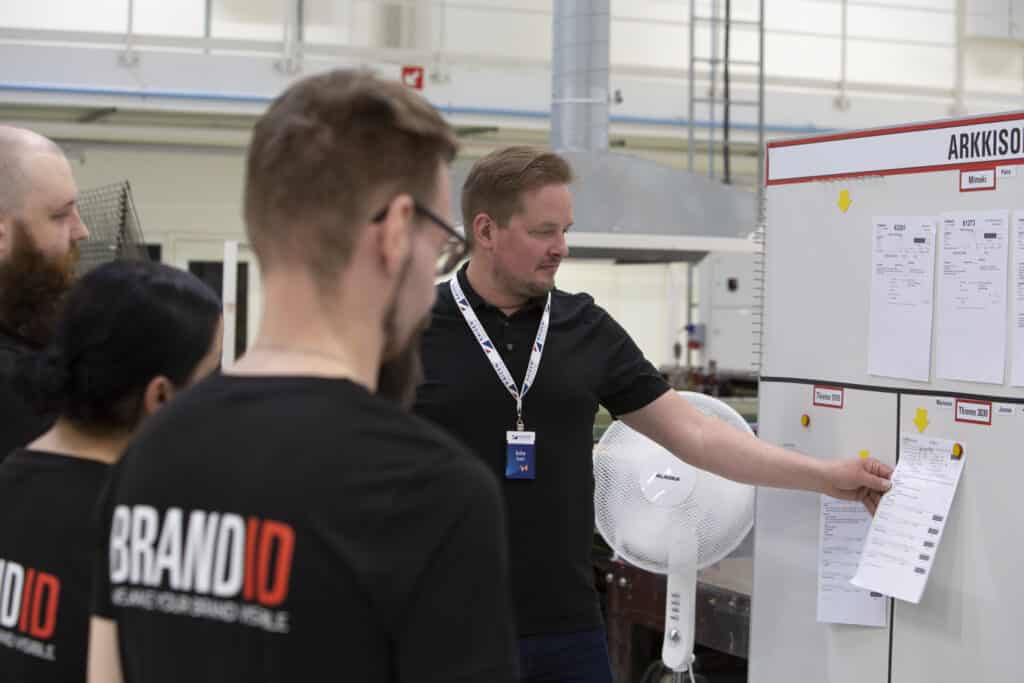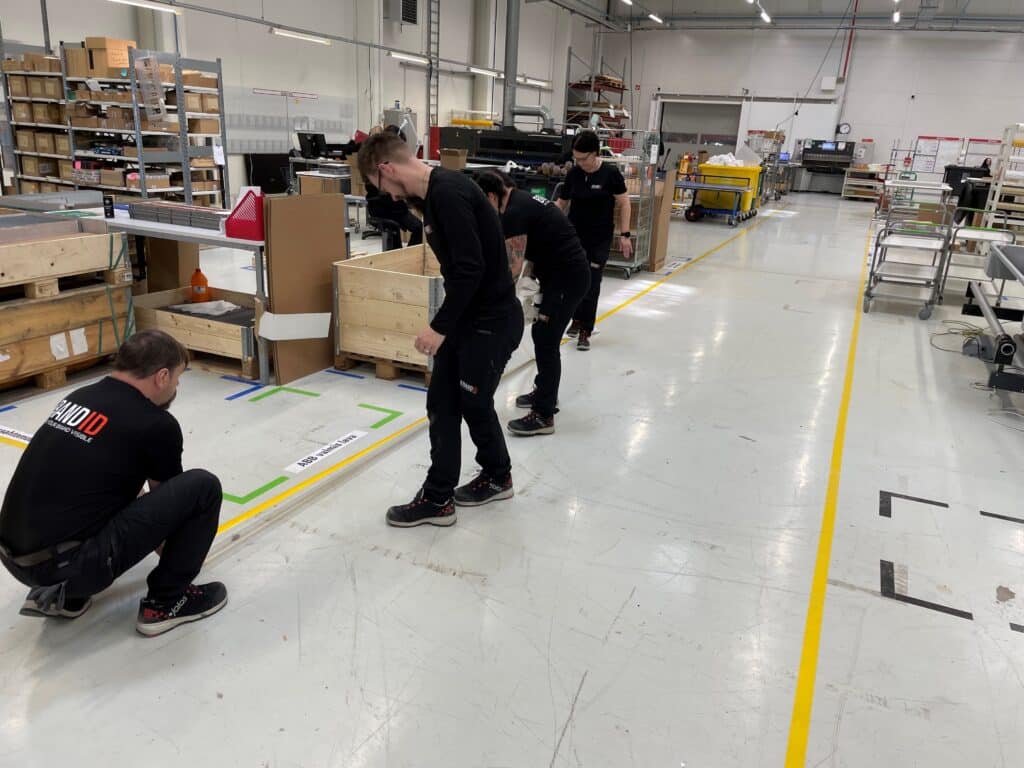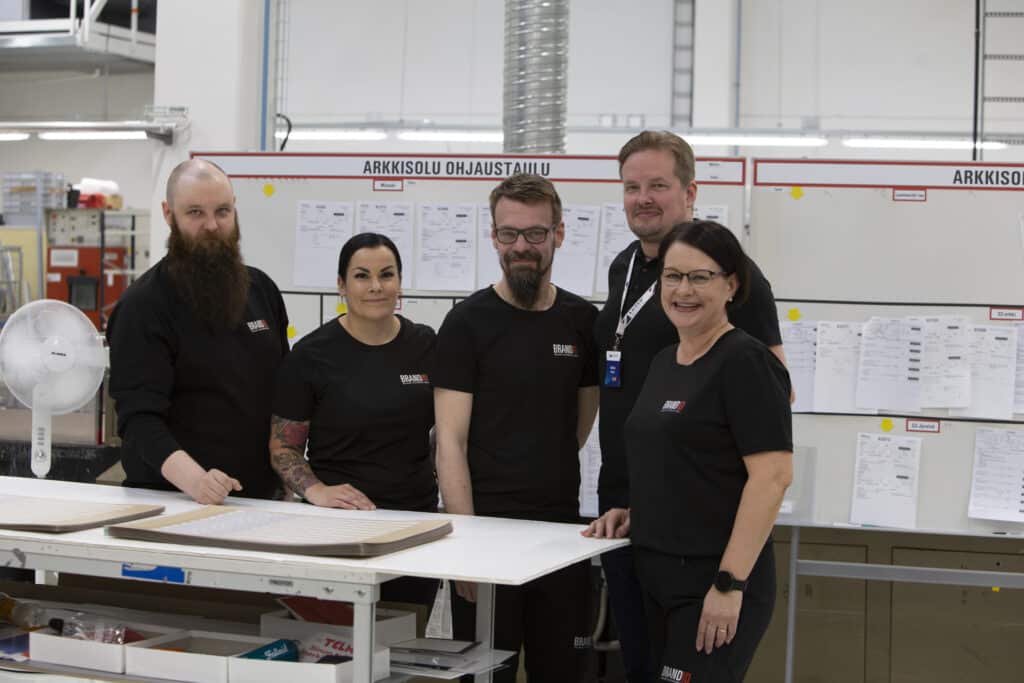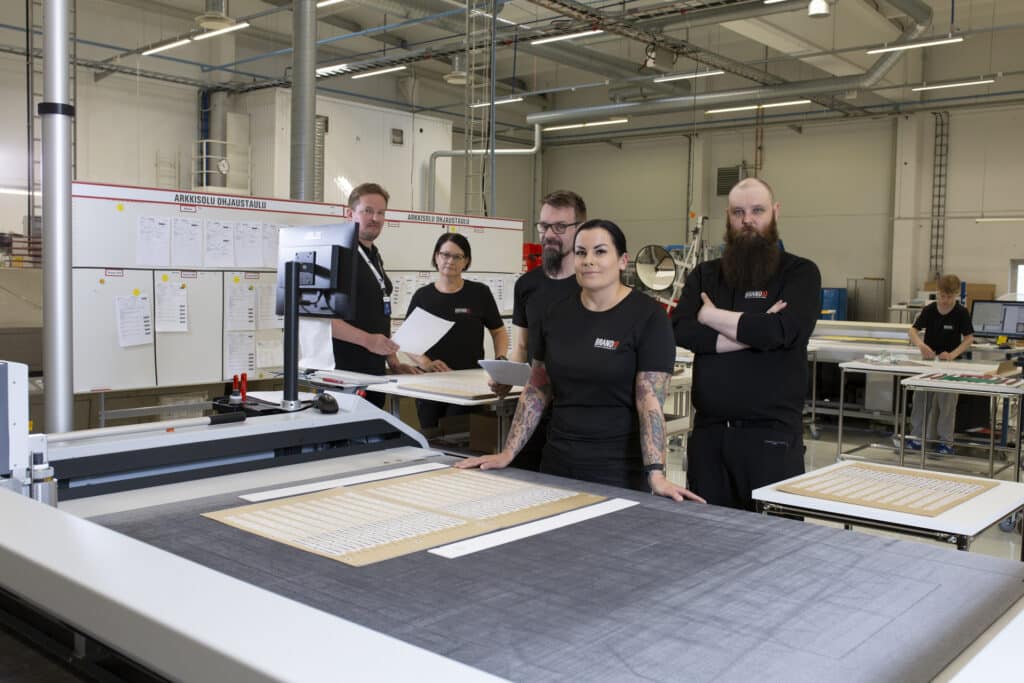Accelerated production, multiskilled staff and improved occupational safety!
Brand ID has undergone one of the most significant
transformations in its history. The entire factory was reorganized,
production lead times were reduced by a third, and staff skills
were expanded. Occupational safety was also enhanced.
Brand ID embraces the Kaizen culture, a participative model of leadership and continuous improvement. Previously, the overhaul successfully transformed the digital roller cell, slashing order completion time from the usual ten days to a mere three. Now, winds of change sweep through the entire factory.
“The need for more efficient production was identified, and the primary goal was to decrease
production lead times. This supports Brand ID’s strong strategic growth ambitions. Increasing
employee skills, enhancing occupational safety, and eliminating waste were equally important objectives,” explains Isto Sahi, CEO (Chief Executive Officer) of Kaizen Institute
.

Reorganization of production machines
The company chose a good time to make the change. Customers did not yet consider production times to be long, but changing customer needs were identified.
”More and more jobs were coming in with a fast turnaround time. For this reason, a strategic decision was made to improve the flow of production,” says Isto.
The team leaders, led by Production Manager Elina Marttila, set out to design solutions.
The biggest changes were to the layout of the factory; what machines are used and where, how material flows through the factory, and so on. ”During the design phase, it was discovered that materials would
cross long distances. This, of course, lengthened the overall turnaround time.”
The machinery required was calculated according to future capacity needs. This led to the removal of some machines and the reorganisation of all of the production machinery. Of course moving the machinery posed its own challenges. ”In the digital roll reform, moving machines was easy: for the most part, you just had to grab the machine and lift it off to a new location. Now we’re talking about large machines that require significantly more maintenance professionals to move them. The continuity of production also had to be ensured during the change. That’s why the plan had to be absolutely certain
and ready to go before we started the concrete work,” Isto explains.
Planning started at the end of last year and the actual implementation of the change started in January.
”We began to work on different layout plans together with team leaders and the management group. We compared different solutions and looked for alternatives. One important criterion was the continuity of production, even during the change. Implementation was carried out in a sensible order, and the
result was very successful from our perspective, too.”

Changing the role of team leaders is an important part of the overhaul
Another important objective was to increase the multi-skilling of production workers and team leaders.
”Responsibilities were further changed and expertise was increased. The aim is for all workers to be
proficient at several factory tasks.” Employees are happy and motivated. Being able to change jobs as and when required increases the flexibility of the company and makes it easier to deal with problems such as absences due to illness.
The overall situation at the factory is easy to grasp. Just a 15-minute walk around the factory gives you an idea of the overall status of production.
”The workload of all production cells is visually displayed on team boards. When a need is better identified, it’s easy to move people from one place to another,” says Isto.
The impact of these changes is easy to measure. ”In practice, last month the lead time for architectural production fell to 3.8 days from a previous level of over 9 days.”
The main objective of increasing capacity has been achieved. Brand ID is able to deliver products on time and according to customer needs. Now it’s time to triple sales.

By rearranging the factory premises and removing unnecessary intermediate storage and redundant
machinery, operations were smoothly brought together. It also freed up 200 square meters of empty floor space ready for new business operations.
The project comprised 81 tasks, large and small, all of which were successfully completed.
One important objective that was achieved was wider and more active employee participation.
”A project this big would never have reached the finish line without wellfunctioning,
motivated teams. The team has felt good about this, even though it’s a major change. Employees
are becoming increasingly bold and independent. After a previous successful project, everyone is enthusiastic and in a good mood, and I don’t remember seeing any sour faces throughout the
entire process,” says Isto.
He also stresses the importance of improving occupational safety.
”We found some minor and a few major risk areas, which were eliminated before anything happened. Now the workspaces are clearer and safer. Noise levels have also fallen and the use of
chemicals has decreased.”

